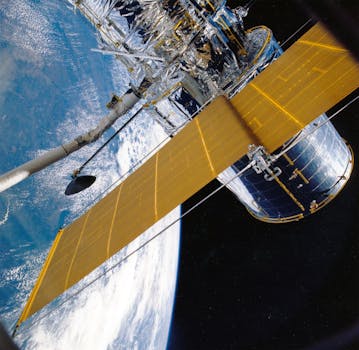
The Rise of Mega-Constellations: Latest Updates in Satellite Telecommunications
The Rise of Mega-Constellations: Latest Updates in Satellite Telecommunications is a rapidly growing field that is transforming the way we communicate and access information. With the launch of thousands of satellites into orbit, mega-constellations are set to provide global internet coverage, bridging the digital divide and connecting remote communities like never before.
Satellite telecommunications have come a long way since the first satellite was launched into orbit in the 1950s. Today, we have a plethora of satellite companies, such as SpaceX, OneWeb, and Amazon’s Kuiper Systems, that are launching mega-constellations of satellites into low Earth orbit (LEO) to provide high-speed internet services. These constellations are designed to provide seamless and continuous coverage, even in the most remote and inaccessible areas of the world.
What are Mega-Constellations?
Mega-constellations refer to a large group of satellites that are launched into orbit to provide a specific service, such as internet connectivity, navigation, or Earth observation. These constellations typically consist of thousands of satellites, each weighing around 100-200 kg, and are designed to work together to provide a continuous and seamless service.
The concept of mega-constellations is not new, but recent advancements in technology and the decline in launch costs have made it possible to launch large numbers of satellites into orbit, making it a viable option for providing global internet coverage. The idea is to create a network of satellites that can provide high-speed internet services to anyone, anywhere in the world, regardless of their geographical location.
Benefits of Mega-Constellations
The benefits of mega-constellations are numerous, and they have the potential to revolutionize the way we communicate and access information. Some of the key benefits include:
Global internet coverage: Mega-constellations can provide internet coverage to even the most remote and inaccessible areas of the world, bridging the digital divide and connecting communities that were previously cut off from the rest of the world.
High-speed internet: Mega-constellations can provide high-speed internet services, with speeds of up to 1 Gbps, making it possible to stream video, access cloud services, and conduct online transactions.
Low latency: Mega-constellations can provide low latency services, with latency as low as 20 ms, making it possible to conduct real-time communications and access cloud services.
Challenges and Limitations
While mega-constellations have the potential to revolutionize satellite telecommunications, there are several challenges and limitations that need to be addressed. Some of the key challenges include:
Space debris: The launch of thousands of satellites into orbit creates a significant amount of space debris, which can pose a risk to other satellites and spacecraft.
Regulatory framework: There is a need for a regulatory framework to govern the launch and operation of mega-constellations, to ensure that they do not interfere with other satellite systems and do not pose a risk to the environment.
Cost: The cost of launching and operating a mega-constellation is significant, and it requires a large investment of resources and capital.
Conclusion
In conclusion, the rise of mega-constellations is a significant development in the field of satellite telecommunications. With the launch of thousands of satellites into orbit, mega-constellations have the potential to provide global internet coverage, bridging the digital divide and connecting remote communities like never before. However, there are several challenges and limitations that need to be addressed, including space debris, regulatory framework, and cost.



